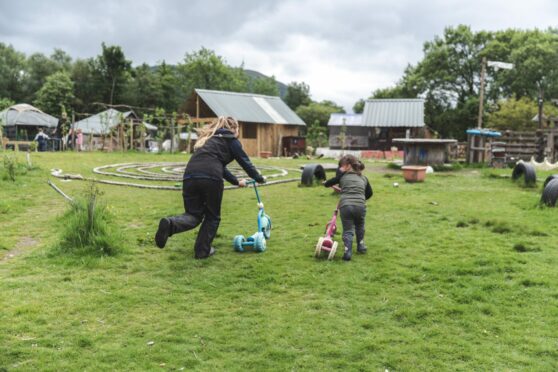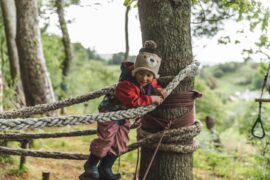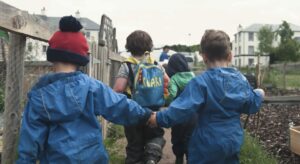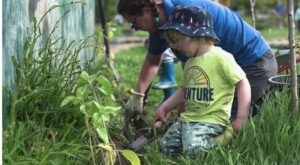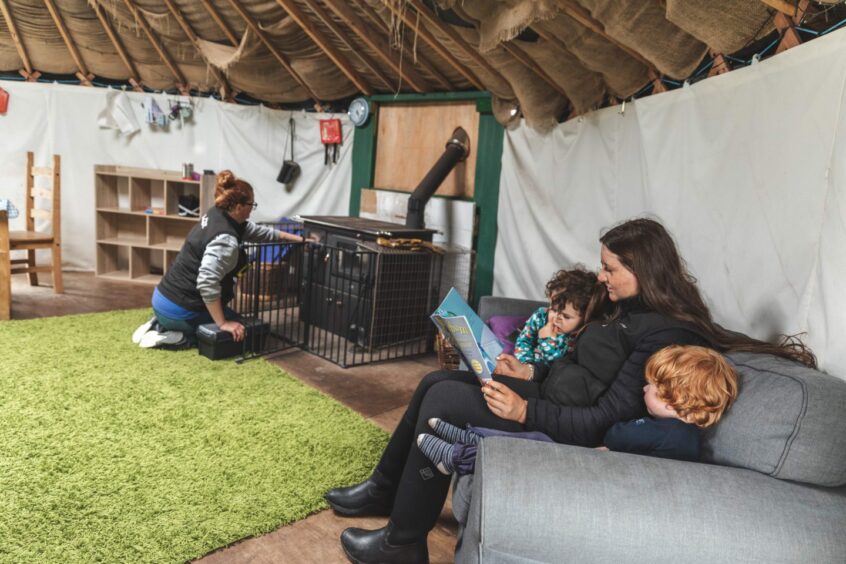Outdoor play is a vital ingredient to a child’s healthy upbringing. The fresh air, adventure and the chance to get close to nature are essential building blocks to their wellbeing.
-
Some Press and Journal online content is funded by outside parties. The revenue from this helps to sustain our independent news gathering. You will always know if you are reading paid-for material as it will be clearly labelled as “Partnership” on the site and on social media channels.
This can take two different forms.
“Presented by”
This means the content has been paid for and produced by the named advertiser.
“In partnership with”
This means the content has been paid for and approved by the named advertiser but written and edited by our own commercial content team.
Yet at the moment only around 5% of nursery provision is based outdoors.
Key benefits of outdoor nurseries in the Highlands
Stramash Outdoor Nurseries cater for two to five-year-olds and have been going since 2009. A Nursery World Awards winner, they are the largest provider of outdoor nurseries in Scotland.
We spoke to Stramash senior manager Jess Vale about the greatest benefits of outdoor nurseries.
Outdoor nurseries build confidence
Playing outdoors builds resilience in youngsters. They learn problem solving, social skills and teamwork. Most importantly they learn how to cope with what goes on around them. Their play-based learning naturally boosts their confidence.
Stramash senior manager Jess Vale says: “Our children are more confident, they’re more articulate, they have incredible social skills because they work together as a team. They learn so much more than they would in an indoor setting because the benefits of being outside in nature facilitate that so much more. They have incredible resilience from being connected to nature and the outside world.”
Outdoor nurseries are healthier for children
One thing the pandemic taught us is that outdoor socialising helps prevent the spread of viruses. Children who play more outdoors will have less coughs and colds. Active play in the fresh air also makes youngsters fitter and just generally healthier. They naturally exercise more and get plenty of Vitamin D, the sunshine vitamin, which protects against a number of illnesses – even in Scotland.
Jess adds: “They’re healthier because viruses and illnesses spread less frequently outdoors. They sleep better, they eat better. Human beings really thrive in an outdoor environment and we really believe it’s the best place for them to be.”
Children learn better through play
Outdoor nurseries stimulate play, which is shown to be the best way for children to learn. Working together and interacting in the outdoors develops their social skills. Adventure, games, fun reading session and storytelling spark their imagination and creativity. Crucially children are also in the perfect environment to develop motor skills which are key to their further learning.
Jess says: “A key component of writing is being physically developed enough to hold a pencil. That doesn’t come from forcing children to hold objects before they’re developmentally ready. It’s more to do with big arm movements, it’s more to do with learning how to grip from things like climbing trees and picking up objects and all the things they naturally do when they’re playing outside.”
Perhaps the greatest benefit of play is that children don’t get tired of learning. The constantly stimulating environment means they pick things up naturally.
At Stramash they use a technique they call “guerrilla learning” where the children learn without realising it because they have a natural interest.
Jess adds: “It’s the way that children learn and stay engaged in learning. It means that when they get to Primary 1 they’re not already bored of learning.”
The perfect environment for your child
Stramash Outdoor Nurseries are open for registration. They started in Oban and now also have sites in Fort William, Elgin and Tornagrain. Their mission is to “provide the nurturing environment which inspires children to become resilient, empathetic and achieving in harmony with the natural world, its seasons and native climate”.
Staff at Stramash believe that no two children are the same and are committed to tailoring their care and education to each child’s specific needs. Although the children spend 90% of their time outside there are also warm and cosy shelters with wood burning stoves where they can rest or read with an adult.
Stramash encourages parents to come and play with the children on site and there are meetings once a month to give feedback. Jess adds:
“Relationships are very much at the heart of everything we do. Relationships with children but also with families. You’re not just joining a nursery, you’re joining a community.”
The nurseries are open to children from ages two to five with funded and private places available.
—
So if you’re looking for stimulating and healthy care for your child, why not try Stramash Outdoor Nurseries.
